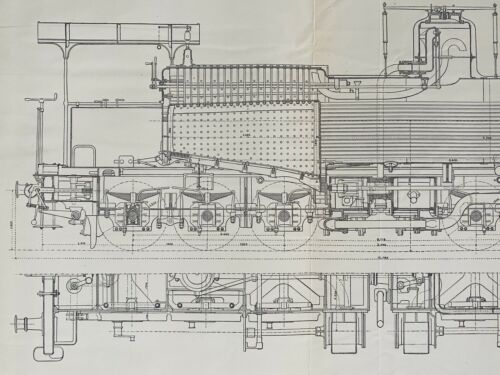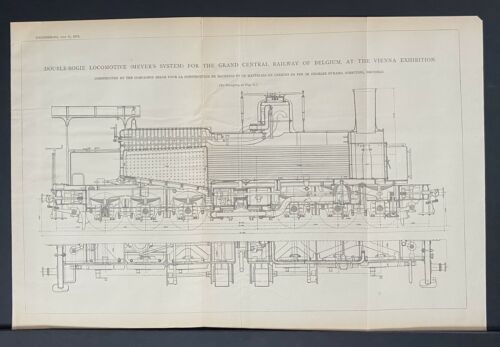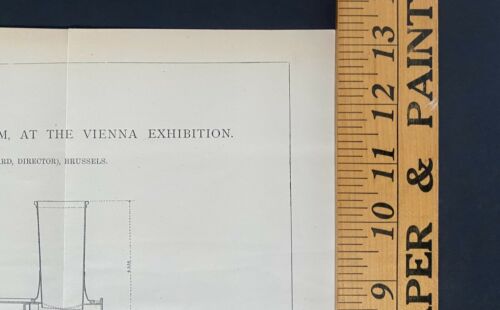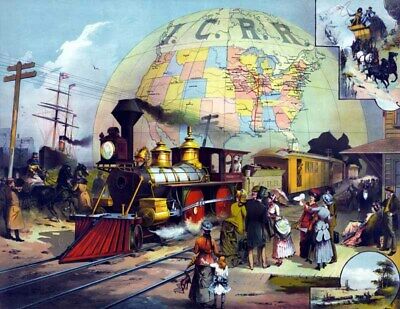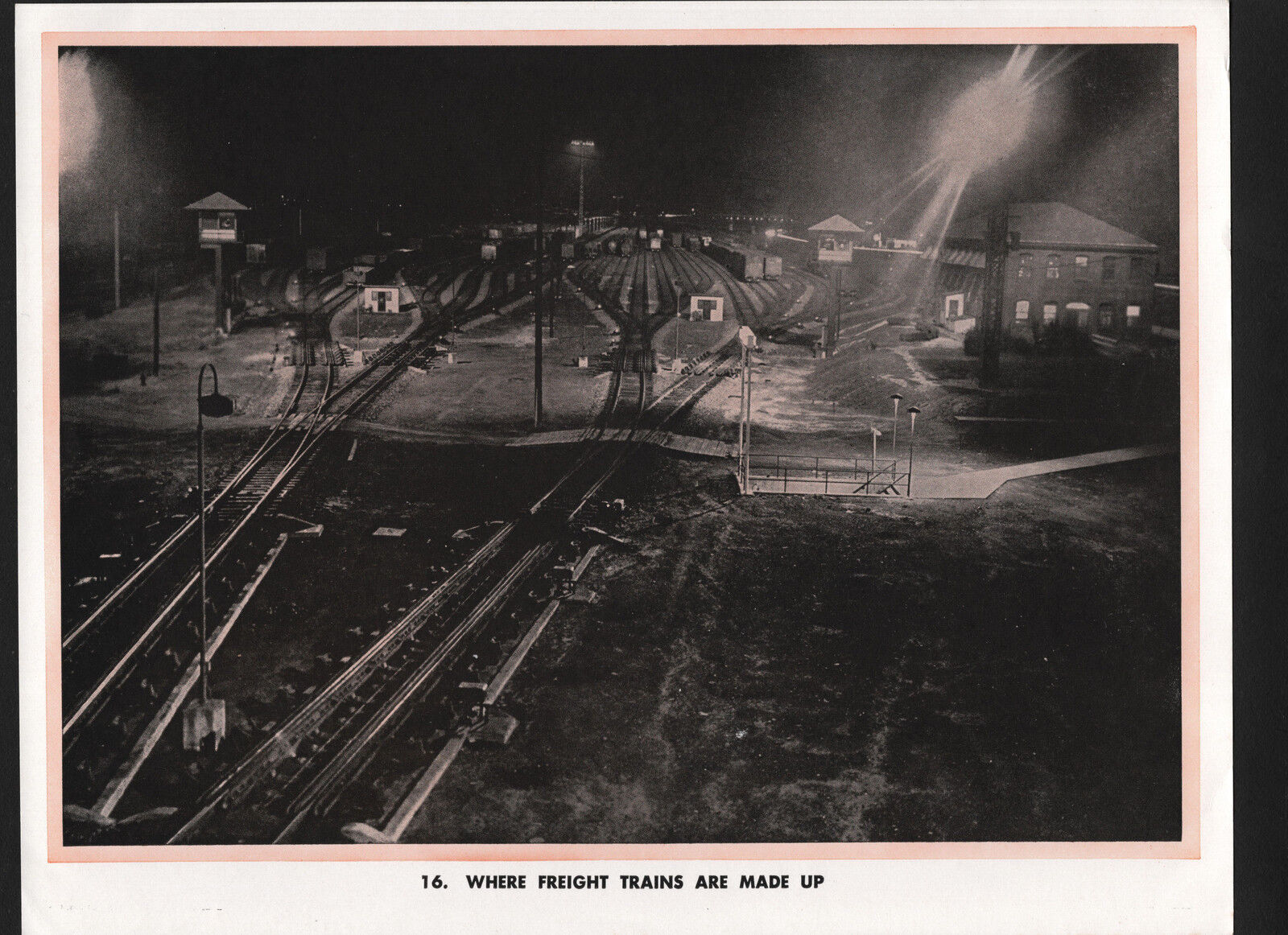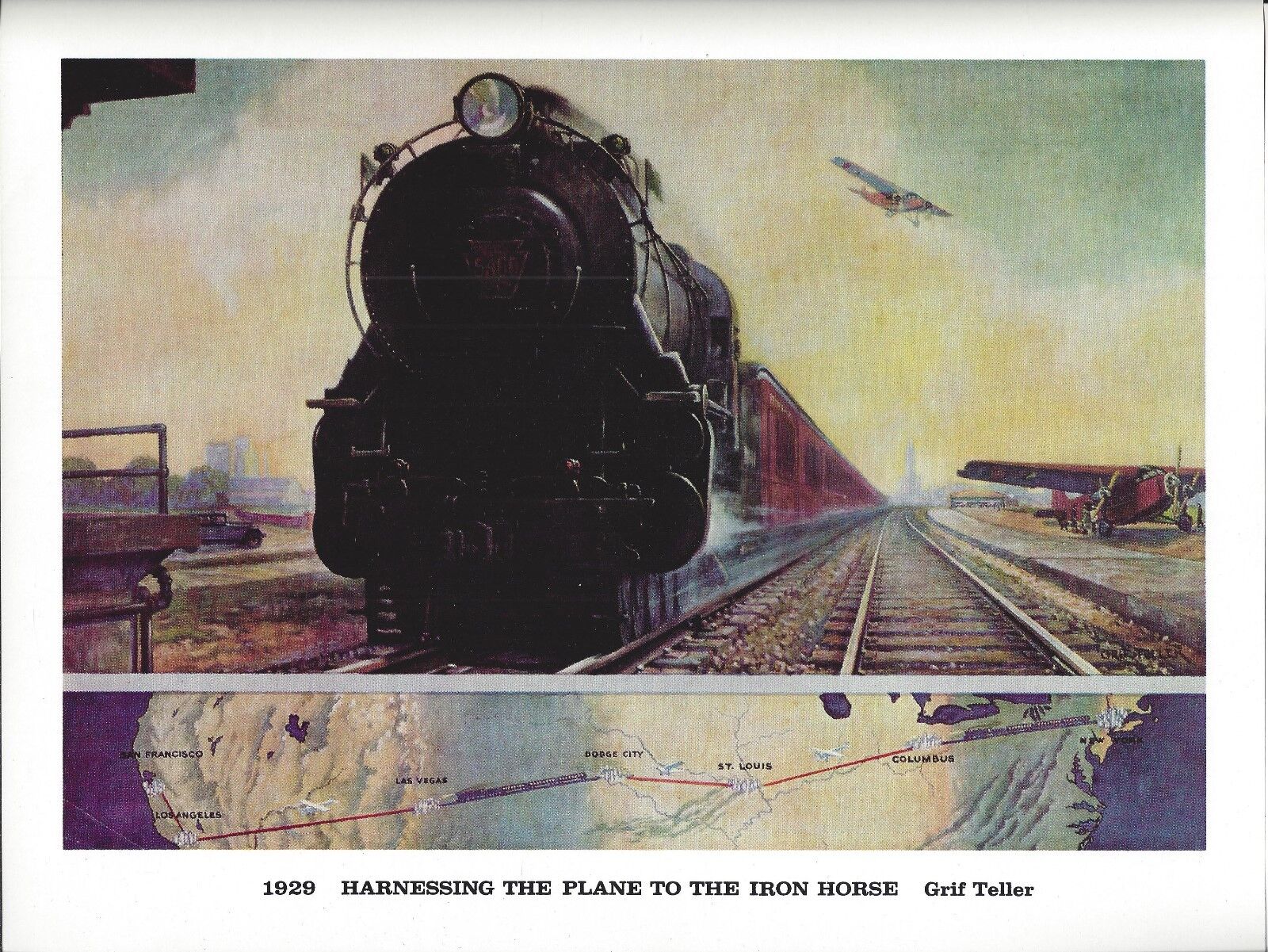-40%
1873 ENGINEERING SCHEMATIC DRAWINGS TRAIN LOCOMOTIVE INDUSTRIAL REVOLUTION PRINT
$ 16.89
- Description
- Size Guide
Description
Two large 22” x 13” original antique train locomotive engineering schematic drawing print dated July 4, 1873.“DOUBLE-BOGIE LOCOMOTIVE (MEYER’S SYSTEM) FOR THE GRAND CENTRAL RAILWAY OF BELGIUM AT THE VIENNA EXHIBITION: CONSTRUCTED BY THE COMPAGNIE BELGE POUR LA CONSTRUCTION DE MACHINES ET DE MATERIALS DE CHEMINIS DE FER (M. CHARLES EVRARD, DIRECTOR) BRUSSELS”
In 1859, Charles Evrard acquired Parmentier Freres et Cie. based in La Croyère, (La Louvière, Belgium) and merged it with the Ateliers Charles Evrard (of Brussels, Belgium) to form the Compagnie Belge pour la Construction de Machines et de Matériels de Chemins de Fer (1862), with a capital of 1 million francs. Charles Evrard was the company’s director.
A Meyer locomotive is a type of articulated locomotive. The design was never as popular as the Garratt or Mallet locomotives. It can be best regarded as 19th Century competition for the early compound Mallet and also the Fairlie articulated designs.
The Meyer was the brainchild of Frenchman Jean-Jacques Meyer (1804-1877), who took out a patent on the design in 1861. The first locomotive, an 0-4-0+0-4-0 named L'Avenir (Future), was built by Société J. F. Cail et Cie. [fr] in 1868 with the support of a state subsidy.
No wheels are rigidly affixed to the boiler; all are mounted on bogies placed directly under the boiler/cab unit (comparable with a modern diesel or electric locomotive). This compares with a Mallet, where the rear set of wheels are attached to the frame, and only the front set swivels as a bogie. Therefore, boiler overhang is less than that of the Mallet locomotive on a curve of the same radius. Meyers are usually set up as a tank engine, with the boiler/cab unit carrying the water and fuel supplies.
A disadvantage of the design is that the firebox is directly above the rear power unit, which limits its size. With two power bogies, flexible steam pipes must be provided to all cylinders. This was difficult to achieve with 19th Century technology. Early Mallet locomotives had compound cylinders, so high pressure steam was provided to the rigid power unit, while the front cylinders (requiring flexible steam pipes) received low pressure steam.
Meyer locomotives were most common in continental Europe, particularly Germany.
Engineering schematics like this represent the ‘DNA’ of the Industrial Revolution.
LIKE THIS ITEM? BUT DON’T LIKE THE PRICE? HOW MUCH DO YOU WANT TO PAY? MAKE US AN OFFER!
